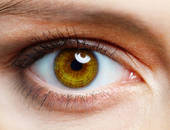
Glaucoma is one of the serious eye diseases that affects a large number of elderly individuals. It can cause irreversible vision loss and even lead to blindness if left untreated. Yet, it is estimated that the majority of people affected by glaucoma do not undergo screening, and this disease remains relatively unknown. By becoming better informed and undergoing regular screenings, it is possible to detect the early symptoms of glaucoma and prevent vision deterioration.
What is glaucoma?
When discussing glaucoma, it is important to address the issue of increased muscle tension or elevated intraocular pressure. This can represent an initial step toward glaucoma, which is why routine eye pressure checks with a professional, especially for the elderly, are crucial. The incidence of glaucoma increases with age, and it is estimated to affect between 1 and 2% of the population over 40 years old and 10% of those over 70 years old. Normal eye pressure should not exceed 21 millimeters of Mercury (mmHg). Beyond this point, it can create an increase in pressure inside the eye, leading to damage to the optic nerve at the retina and a reduction in the field of vision. This is the presence of glaucoma. However, it should be noted that high eye pressure does not always lead to glaucoma, and conversely, glaucoma can sometimes develop despite normal eye pressure.
Find YOUR ideal care home NOW!
How to recognize the symptoms of glaucoma?
To recognize the symptoms of glaucoma, it is important to know that there are several types of glaucoma, some of which are more symptomatic than others. Some can be very painful and present with distinctive signs such as sharp eye pain and redness, while others often go unnoticed and are only detected during a thorough eye examination by a professional. As glaucoma progresses, the optic nerve becomes increasingly damaged. Glaucoma manifests as a reduction in peripheral vision. If the damage continues to progress, central vision eventually disappears, leading to blindness.
What are the symptoms of open-angle glaucoma?
Open-angle glaucoma is one of the forms of so-called "primary" glaucomas, meaning it occurs spontaneously. It can be congenital, occurring in infants around 3 or 4 months of age and being treated through surgery, or it can develop in adulthood. Among primary glaucomas in adults, open-angle glaucoma corresponds to a chronic form with slow and often silent progression. It accounts for 90% of glaucoma cases and affects both eyes, more or less simultaneously. It is often due to high intraocular pressure, or ocular hypertension, which is one of the primary risk factors for open-angle glaucoma.
Monitoring this eye pressure is therefore the best way to prevent and halt its progression. Other factors that can increase the risk of developing glaucoma include aging, a genetic predisposition or family history, high myopia, eye globe malformation, or certain personal histories of retinal detachment, ocular hypertension, eye surgery, or eye trauma. Its progressive nature and lack of apparent symptoms, which can last for about fifteen years, make early detection of this particularly widespread type of glaucoma very challenging.
Without regular check-ups, it is often diagnosed too late. Therefore, it is recommended to have regular visits to an ophthalmologist, especially if you have one or more of these risk factors. Some of the early signs of the disease may include vision disturbances like a sensation of visual fog and colored halos around lights, excessive tearing, and occasional headaches, all of which can often go unnoticed without systematic screening, recommended from the age of 40.
What are the symptoms of closed-angle glaucoma?
Closed-angle glaucoma, also known as acute glaucoma, also falls under the category of "primary" adult glaucoma, along with open-angle glaucoma. This acute form of glaucoma, much rarer than open-angle glaucoma, occurs suddenly due to the anatomical closure of the angle between the iris and the cornea, which is responsible for draining aqueous humor. This closure leads to a sudden increase in intraocular pressure, which compresses the optic nerve and rapidly impairs vision. A crisis of closed-angle glaucoma can be recognized by the following symptoms:
- Severe headaches
- Intense eye pain and tearing
- Red eyes
- Very blurred vision
- Nausea
As soon as the first symptoms appear, such as blurry vision, a sensation of visual fog, even mild discomfort, and colored halos around lights, urgent ophthalmological care is necessary.
Hypermetropia, cataracts, and family history can be risk factors for closed-angle glaucoma, and a crisis can be triggered under various circumstances, such as stress, certain medications, or prolonged periods in the dark, for example.
In addition to these two primary types of glaucoma, there are also secondary glaucomas. They are complications resulting from other diseases and occur due to various external causes, such as eye trauma, inflammatory eye diseases, cortisone treatment, diabetes, eye tumors, or other factors.
How is glaucoma treated?
The treatment approach differs depending on whether it is closed-angle or open-angle glaucoma. Closed-angle glaucoma requires urgent medical attention. The goal is to rapidly reduce eye pressure by either stopping the production of aqueous humor or promoting its drainage. Several eye drops, analgesics, and medications will be administered urgently by the doctor. Subsequently, surgical or laser intervention may be considered to prevent recurrence. As for open-angle glaucoma, measuring eye pressure can reveal elevated intraocular pressure. After a thorough ophthalmological examination, the doctor may prescribe treatment. Otherwise, the disease will continue to progress until optic nerve damage leads to blindness."
Risk factor
| Risk Factor | Impact | Prevention |
|---|---|---|
| Aging | Increases the likelihood of optic nerve damage. | Regular eye exams starting at age 40. |
| Family History | Genetic predisposition to glaucoma. | Screening for those with a family history. |
| High Eye Pressure | Main risk factor for optic nerve damage. | Routine pressure checks, lifestyle changes. |
| Diabetes | Increases risk of secondary glaucoma. | Manage blood sugar levels, regular ophthalmologist visits. |
| Prolonged Cortisone Use | Can elevate intraocular pressure. | Use corticosteroids only under medical supervision. |
FAQ:
What is glaucoma?
Glaucoma is an eye condition caused by increased intraocular pressure or optic nerve damage, leading to gradual vision loss. It can develop silently over time or present with acute symptoms, depending on the type.
What are the main types of glaucoma?
There are two primary types: open-angle glaucoma, which progresses slowly without noticeable symptoms, and closed-angle glaucoma, which develops suddenly and requires immediate medical attention.
How does high intraocular pressure affect vision?
High intraocular pressure can damage the optic nerve, leading to peripheral vision loss. If left untreated, it can progress to complete blindness.
What are the symptoms of open-angle glaucoma?
This form of glaucoma often has no symptoms in the early stages. As it progresses, individuals may experience vision disturbances, halos around lights, excessive tearing, or a foggy visual field.
What are the symptoms of closed-angle glaucoma?
Closed-angle glaucoma presents suddenly with severe eye pain, headaches, redness, blurred vision, nausea, and halos around lights. It is considered a medical emergency.
Who is at risk of developing glaucoma?
Risk factors include aging, family history, high myopia, eye trauma, prolonged cortisone use, diabetes, and conditions affecting eye structure.
How is glaucoma diagnosed?
Glaucoma is diagnosed through regular eye exams, including intraocular pressure measurements, optic nerve imaging, and visual field tests. Early detection is key to preventing vision loss.
What treatments are available for glaucoma?
Treatment depends on the type of glaucoma. Open-angle glaucoma is managed with eye drops, medications, or laser therapy. Closed-angle glaucoma requires emergency treatment, including pressure-lowering medications and possible surgery.
Can glaucoma be prevented?
While it cannot always be prevented, regular eye check-ups, managing risk factors, and early intervention can slow disease progression and prevent vision loss.
Need help finding a care home?
Senior Home Plus offers free personalized guidance to help you find a care facility that suits your health needs, budget, and preferred location in the UK.
Call us at 0203 608 0055 to get expert assistance today.
Do you need a care home for yourself or your loved one?
Search for Care Homes by Region
| East Midlands | Eastern | Isle of Man |
| London | North East | North West |
| Northern Ireland | Scotland | South East |
| South West | Wales | West Midlands |
| Yorkshire and the Humber |
Share this article :
Latest posts
You are looking for an establishment for your loved one ?
Get availability & prices
Fill in this form and receive
all the essential information
We would like to inform you of the existence of the opposition list for telephone canvassing.






.jpg)




